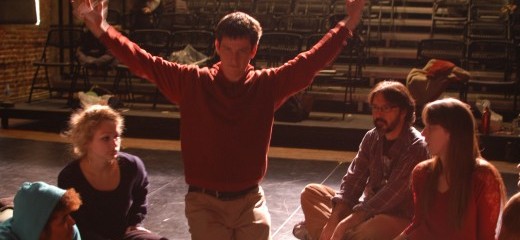
Dancing Around Dramaturgy (an exploration)
by Debbie Shapiro
“A live event, thoughtfully conceived and carefully presented, can bring people to a sense of themselves and their relationships to the others in the audience and in the world that is absolutely unique and, perhaps, transcendently valuable,” writes Mark Lord in The Dramaturgy Reader. I agree. I write for thINKingDance because I believe that that’s what dance-makers strive to do: to tell us something about our culture, about ourselves.
Lord, Headlong Dance Theater’s dramaturg, teaches a dramaturgy class at the Headlong Performance Institute (see photo: Lord is seated to the right of Andrew Simonet, gesturing). Lord is neither a dancer nor a creator in the company. Through my administrative lens as Managing Director for Headlong, I know he plays a vital role in the rehearsal process, but exactly what that entails I never really knew. I dug into this mystery by seeking out people from Philadelphia and New York who have served as dramaturgs in a choreographer’s process.
Dramaturgy in dance is a recent concept. Raimund Hogue worked with Pina Bausch as a dramaturg in the early 1980s. Heidi Gilpin was a dramaturg for William Forsythe beginning in 1989. These are some of the earliest known cases of a dance-process partnership that used the term formally. However, the relationship of dramaturg and dancer/choreographer dates back, unofficially, to the beginning of the 20th century, at least. “Diaghilev was the dramaturg of The Ballet Russes. John Cage was the dramaturg for Cunningham,” according to Susan Manning, dance historian and now dramaturg for New York choreographer Reggie Wilson.
The role of a dramaturg has been familiar in the theater world for centuries. It lends itself to dance when a choreographer’s process involves asking questions and having a conversation while creating. This requires a layer of work beyond determining steps, movement phrases, formations, costumes, etc., in order to address the artist’s entire concept and the audience’s experience of the performance. It also requires that the creator be comfortable exposing unfinished ideas to examination.
But if dramaturgy is so frequently about dialog, how can it be integrated into dance, an art based on movement, rather than language? I asked Susan Mar Landau, dramaturg for Levi Gonzalez’s piece Intimacy, presented in Philadelphia in October. Landau, who has a visual art background, says, “Part of the job is looking and watching very intensely. In dramaturgy for theater, the dramaturg works with the director to deconstruct the text. I look at dance as the text that can be read and instead of deconstructing, you are constructing the meaning in it.” She explained that her dramaturgical process with Gonzalez began with “an awful lot of talking (before seeing any material, before he went into rehearsal, before making the movement). We started with his questions; it was a piece that was very much about performance itself, the experience of performance and how it situated itself between the performer and the audience. I brought to Levi research on performance politics and text by Peggy Phelan, and then the studio work started. The conversation then turned into a response to what I saw him make.”
Dramaturgs are the first pair of outside eyes on a piece. Yet, “ask six dramaturgs what they do, and you’ll get six answers,” says Marcel William Foster, dramaturg for Meredith Rainey’s Carbon Dance Theatre. He says “a dramaturg brings a level of research to the room, and then gives feedback. I try to be clear about what the choreographer’s intentions are. What are the unwritten values? For Meredith the unwritten value is he’s extremely concerned about the total experience of the audience member.”
Lord too sees dramaturgy as including the audience’s connections with the performance, with each other, and with the context. Whether it’s “inside, outside, for free or for a million dollars, sitting on benches or in velvet chairs,” it all plays into the potential for “transcendence.”
Sometimes, dramaturgs support an artist through a form of “conceptual discovery,” or “reflective practice.” Sebastienne Mundheim says that she and choreographer Kate Watson-Wallace “would have a lot of philosophical and imagistic conversations as friends. I started to describe what I was seeing in her work, and Kate, who is really interested in reflective inquiry and intuitive response, liked having the conversations. I started being in the studio with her and doing photography.” Mundheim’s job description: “Conduct research, and help to build and clarify a conceptual framework. Act as a sounding board to help the director articulate what you are seeing, because it’s easier for an outside eye to help shape the core concept. Give feedback on the content, sometimes give design, directing advice...knowing that all ultimate decisions are the director/choreographer’s.”
In fact, dramaturgy includes any activity that helps give shape to a work in development. In addition to observation, consideration, meditation, conversation, and interrogation, Lord describes the simple act of “making a list of things you don’t know about what you’re seeing, and keeping track of them” as an act of dramaturgy. He teaches students to look at the structure, metaphors, materials, and—to a lesser extent—execution of a piece. Although his background is theater, Lord’s approach to dramaturgy focuses on tools applicable to any artistic discipline, as long as there is material in front of you to question.
Mira Rafalowicz, wrote in her 1978 article, Dramaturg in Collaboration with Joseph Chaikin, about her three-stage process: 1. Defining the area of exploration. 2. Developing and shaping the material. 3. Watching the piece start to emerge. Each stage warrants a different type of question-asking. A stage 1 question might be, “What are we trying to explore and express with this work?” In stage 2 the questions sound more like, “What is transmitted or evoked here?” or “Does this idea stink?” Stage 3 questions are the most specific, zooming in on structure: “Is there a clear beginning, middle, and end?”
Dramaturgy pushes dancers to take on more, go further with their artistic ambitions, and raise the stakes. It wakes up the choreographer—as powerful dance does the audience.
By Debbie Shapiro
January 30, 2012


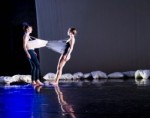
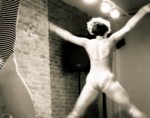
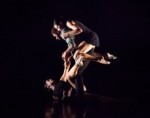
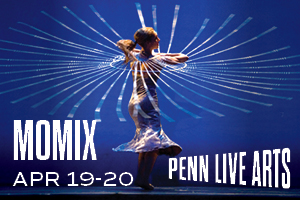
.png)


